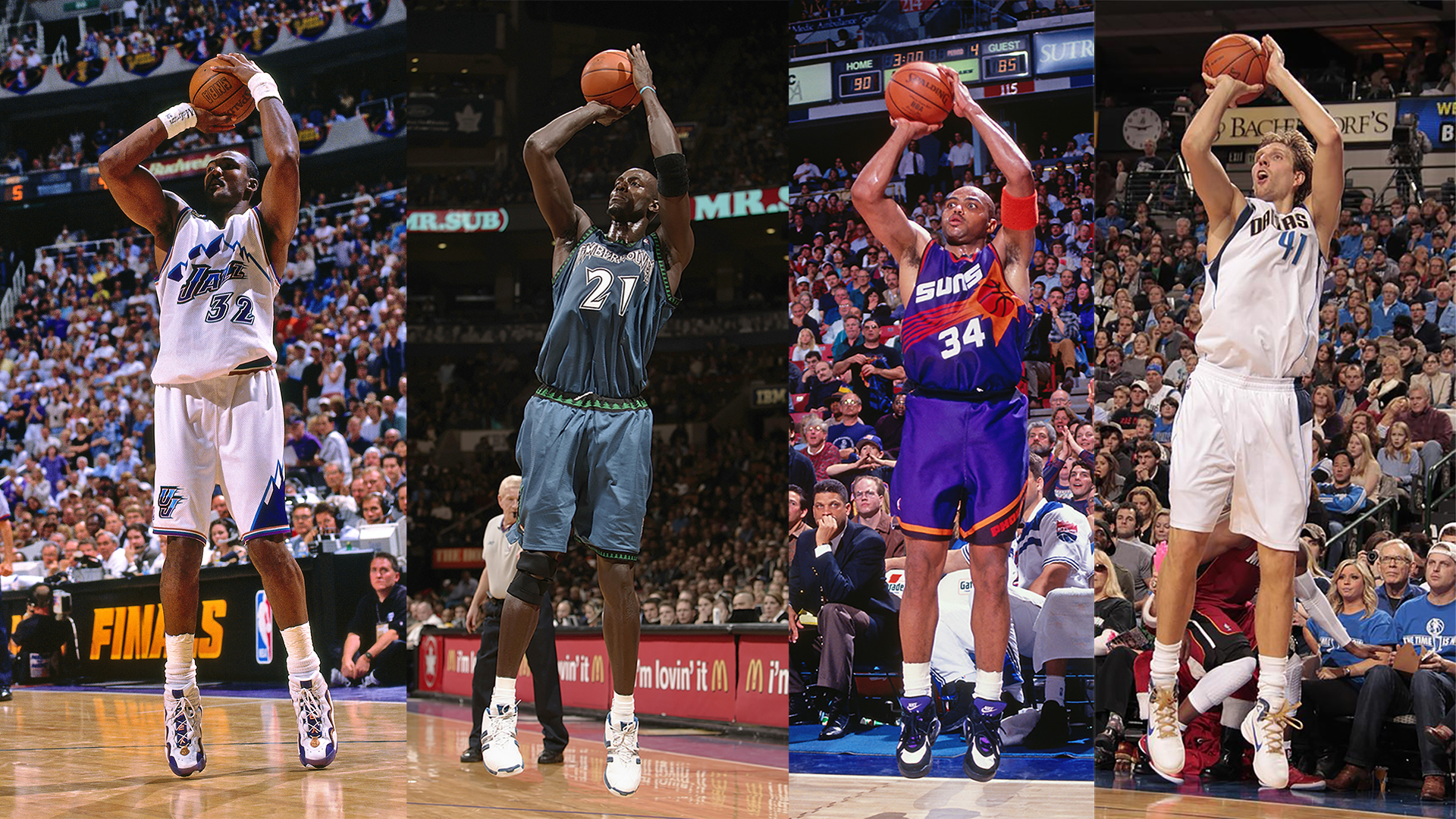
L-R: Karl Malone of the Utah Jazz, Kevin Garnett of the Minnesota Timberwolves, Charles Barkley of the Phoenix Suns and Dirk Nowitzki of the Dallas Mavericks. /VCG
L-R: Karl Malone of the Utah Jazz, Kevin Garnett of the Minnesota Timberwolves, Charles Barkley of the Phoenix Suns and Dirk Nowitzki of the Dallas Mavericks. /VCG
Editor's note: Since winning his third ring in 2005, Tim Duncan has proven himself the undeniable greatest power forward in NBA history, just like Michael Jordan of shooting guards and Magic Johnson of point guards. However, who should be the man standing next to Duncan? That is a contentious question, and in this four-episode series, four of the best candidates –Dirk Nowitzki, Kevin Garnett, Karl Malone and Charles Barkley, face off for the honor of second-best power forward. In this episode, we compare what each player can do on offense.
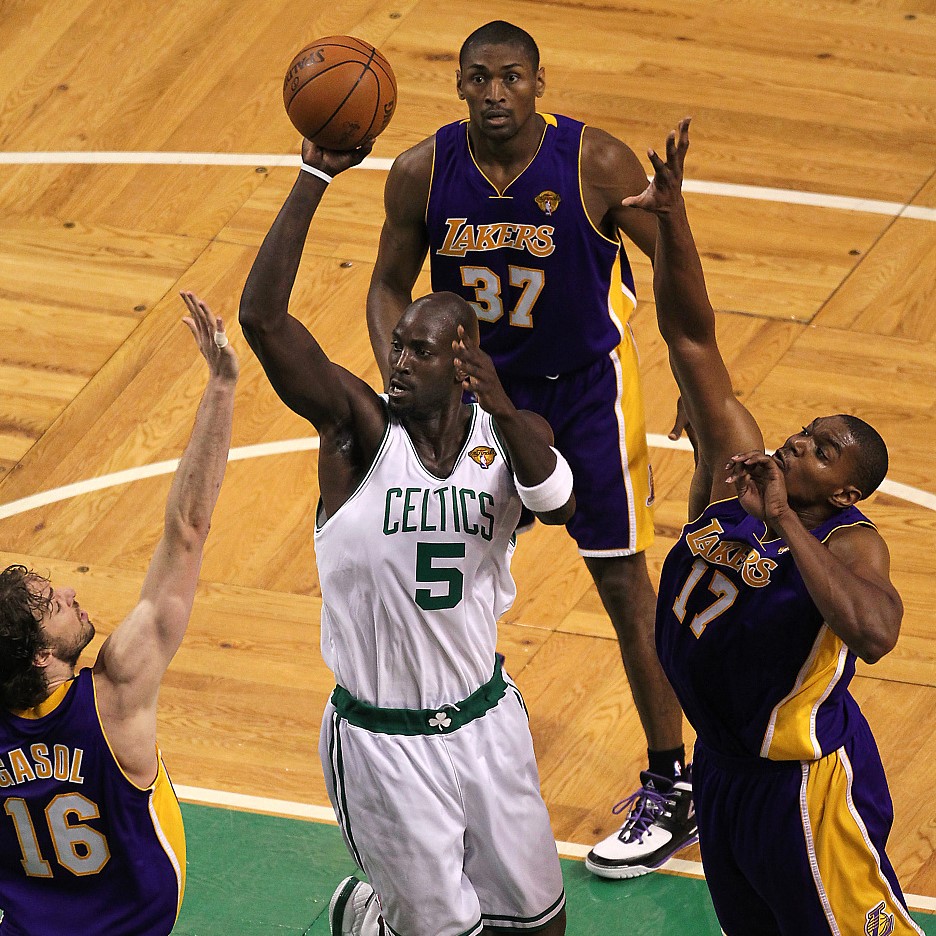
Kevin Garnett #5 of the Boston Celtics shoots the ball in Game 4 of the NBA Finals against the Los Angeles Lakers at the TD Garden in Boston, Massachusetts, June 10, 2010. /VCG
Kevin Garnett #5 of the Boston Celtics shoots the ball in Game 4 of the NBA Finals against the Los Angeles Lakers at the TD Garden in Boston, Massachusetts, June 10, 2010. /VCG
Total career regular season points scored: Malone (36,928), Nowitzki (31,560), Garnett (26,071), Barkley (23,757)
Points per game: Malone (25.0 points), Barkley (22.1), Nowitzki (20.7), Garnett (17.8 points)
The other three definitely beat Garnett in this area. Despite his size, athleticism, toughness and intensity, Garnett has never been a first-class isolation scorer. His signature moves on offense are: catch and shoot from 20 feet and a turnaround jumper around the paint. Though KG for most time of his career, was faster than almost all other big men in the league, he was not as sharp a slasher facing the rim. In fact, for his whole career, Garnett was a jump shooter on offense. He can shoot, pass, set screens, but he could never change the opponents' defense by himself.
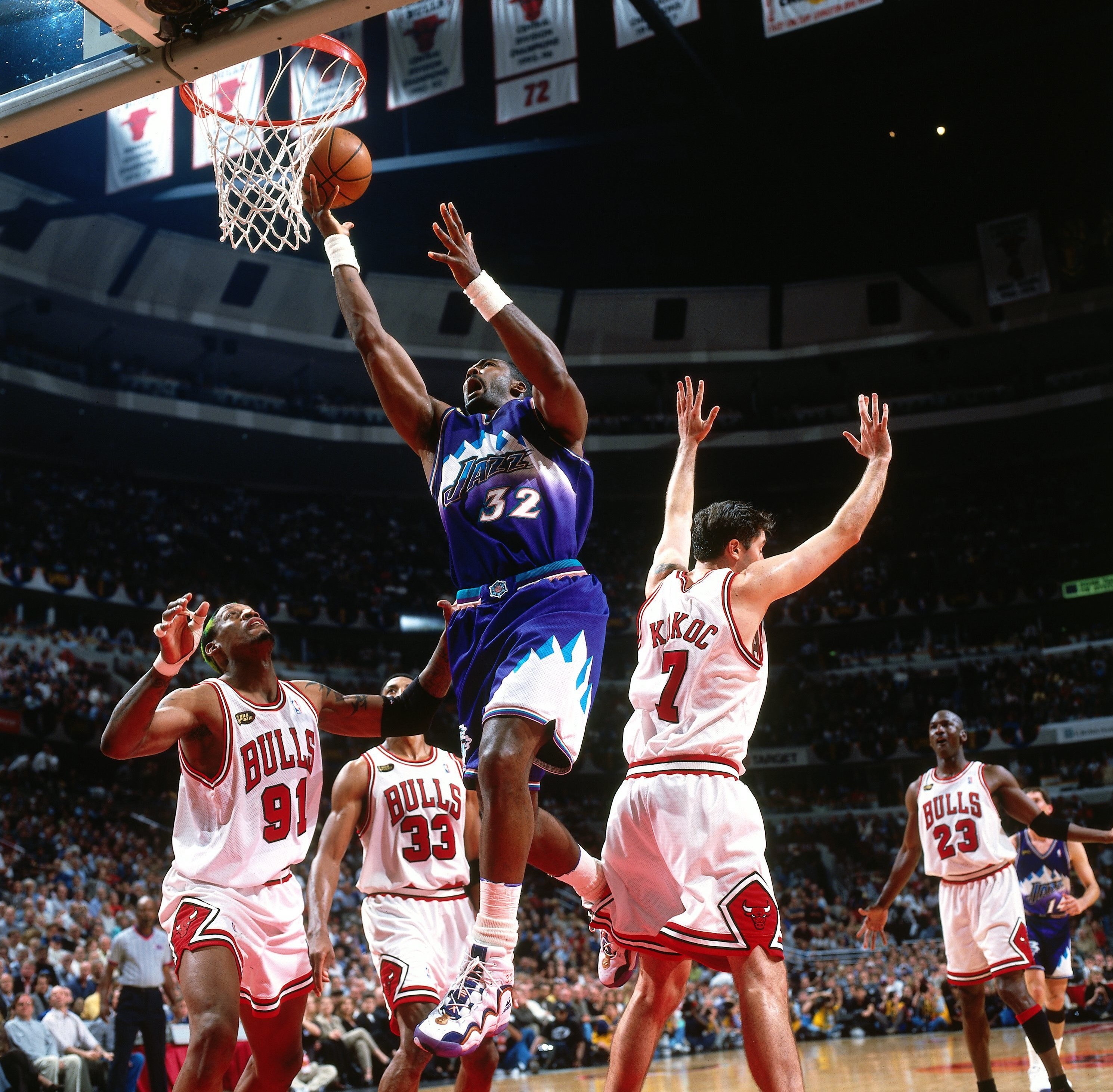
Karl Malone #32 of the Utah Jazz drives towards the rim in Game 4 of the NBA Finals against the Chicago Bulls at the United Center in Chicago, Illinois, June 10, 1998. /VCG
Karl Malone #32 of the Utah Jazz drives towards the rim in Game 4 of the NBA Finals against the Chicago Bulls at the United Center in Chicago, Illinois, June 10, 1998. /VCG
In the early stage of their careers, Malone, Barkley and Nowitzki shared similar moves on offense – all three were good slashers facing the rim. Malone and Barkley relied more on their strong bodies, power and athleticism while Nowitzki benefited more from his shooting and coach Don Nelson's early offense system.
The three started to go separate ways in the middle of their careers. Malone continued to grow stronger, adding muscle everywhere but developing a reliable jump shot and skill in passing as well. Therefore, despite his notoriously deadly elbows, Malone built his career with perimeter shots. This choice extended his career but led to Malone's biggest offensive weakness: he did not have enough counter moves to remain effective in the playoffs.
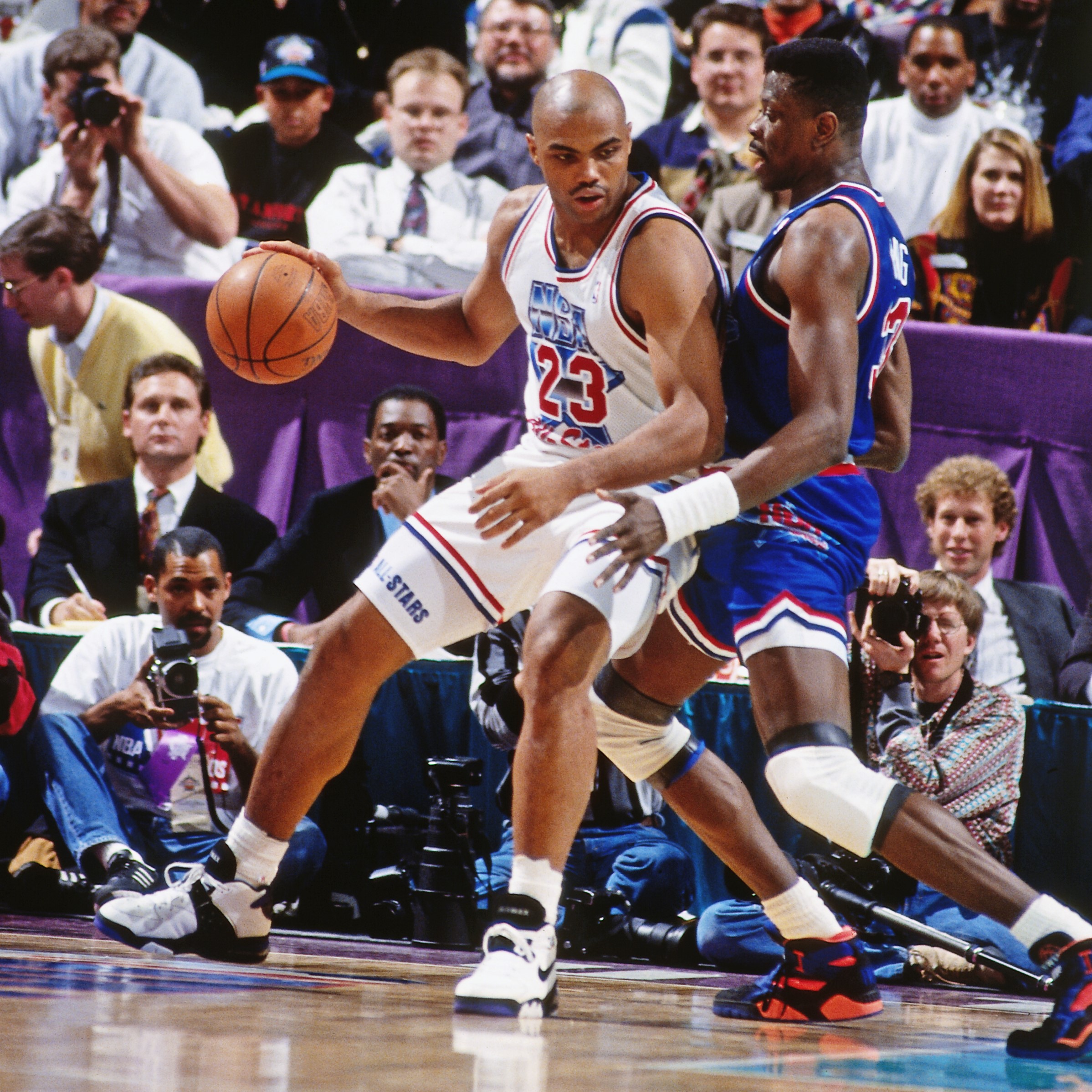
Charles Barkley (L) of the Western Conference All-Star Team posts up against the defense of Patrick Ewing of the Eastern Conference Team in the NBA All-Star Game at the Delta Center in Salt Lake City, Utah, February 21, 1993. /VCG
Charles Barkley (L) of the Western Conference All-Star Team posts up against the defense of Patrick Ewing of the Eastern Conference Team in the NBA All-Star Game at the Delta Center in Salt Lake City, Utah, February 21, 1993. /VCG
Despite his 1.93-meter-height, Barkley possessed one of the richest offensive arsenals for power forwards. His combination of power, speed, explosiveness made him one of the biggest headaches for the opponents' defense. He could penetrate from the 3-point line and drive towards the rim; he could shoot both from downtown and in the middle range; as for his post-up ability, one story reveals how intimidating it was: the league stated that no player below the free throw line could post up defenders for longer than five seconds. This has been known as "The Booty Rule" made for Barkley and his destructive bottom.
Barkley's play style made him one of the best go-to-guys on offense especially in the playoffs, but it also drained his health much faster. That explained why he had the shortest career of the four.

Dirk Nowitzki #41 of the Dallas Mavericks posts up against the defense of Udonis Haslem of the Miami Heat in Game 5 of the NBA Finals at the American Airlines Center in Dallas, Texas, June 9, 2011. /VCG
Dirk Nowitzki #41 of the Dallas Mavericks posts up against the defense of Udonis Haslem of the Miami Heat in Game 5 of the NBA Finals at the American Airlines Center in Dallas, Texas, June 9, 2011. /VCG
Nowitzki was the perfect balance between Malone and Barkley. As the best shooting big man in NBA history, he reached his first career peak in 2007 when he was named the NBA MVP. Nonetheless, it was also in that season when Nowitzki's biggest flaw was revealed, by his early mentor Nelson: the seven-foot German was actually a jump shooter who dreaded close defense, even if it came from people much shorter than him.
Nowitzki's transformation was different from that of Malone and Barkley – Malone did it via body-building and Barkley lost weight to grow better. As a 29-year-old big man whose athleticism was already beginning to decline, Nowitzki did not turn to muscle, but started to develop post-up skills in the middle block. He continued to refine his shooting, but he also learned how to shoot the ball against defense, how to use his shooting threat as distraction to dodge defenses, how to draw fouls, and how to pass when he was double-teamed.
Thanks to the new weapons Nowitzki added to his arsenal, he upgraded from a scorer to an isolation scorer who could launch most of the team's offense by posting up in any position along the free throw line. Nowitzki did not have to carry the whole team by dropping 50+points per game but the whole team operated like a winning group led by him and pocketed the NBA championship in 2011.
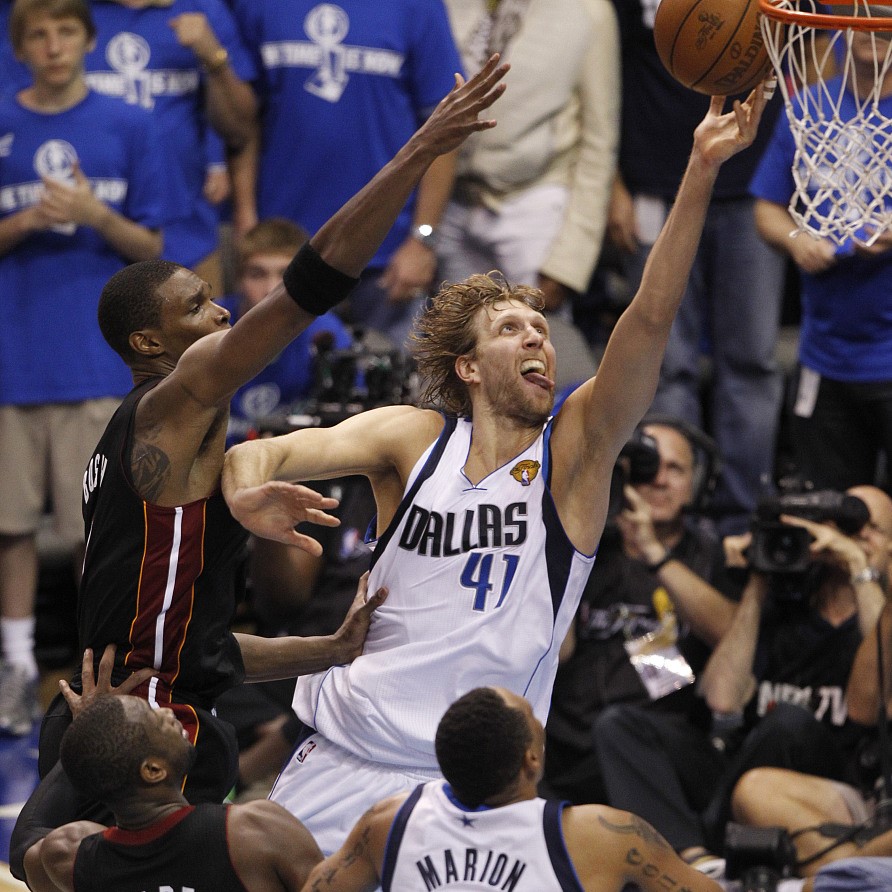
Dirk Nowitzki #41 of the Dallas Mavericks shoots the ball in Game 5 of the NBA Finals against the Miami Heat at the American Airlines Center, June 9, 2011. /VCG
Dirk Nowitzki #41 of the Dallas Mavericks shoots the ball in Game 5 of the NBA Finals against the Miami Heat at the American Airlines Center, June 9, 2011. /VCG
In this area: Nowitzki>Barkley ≥ Malone>Garnett